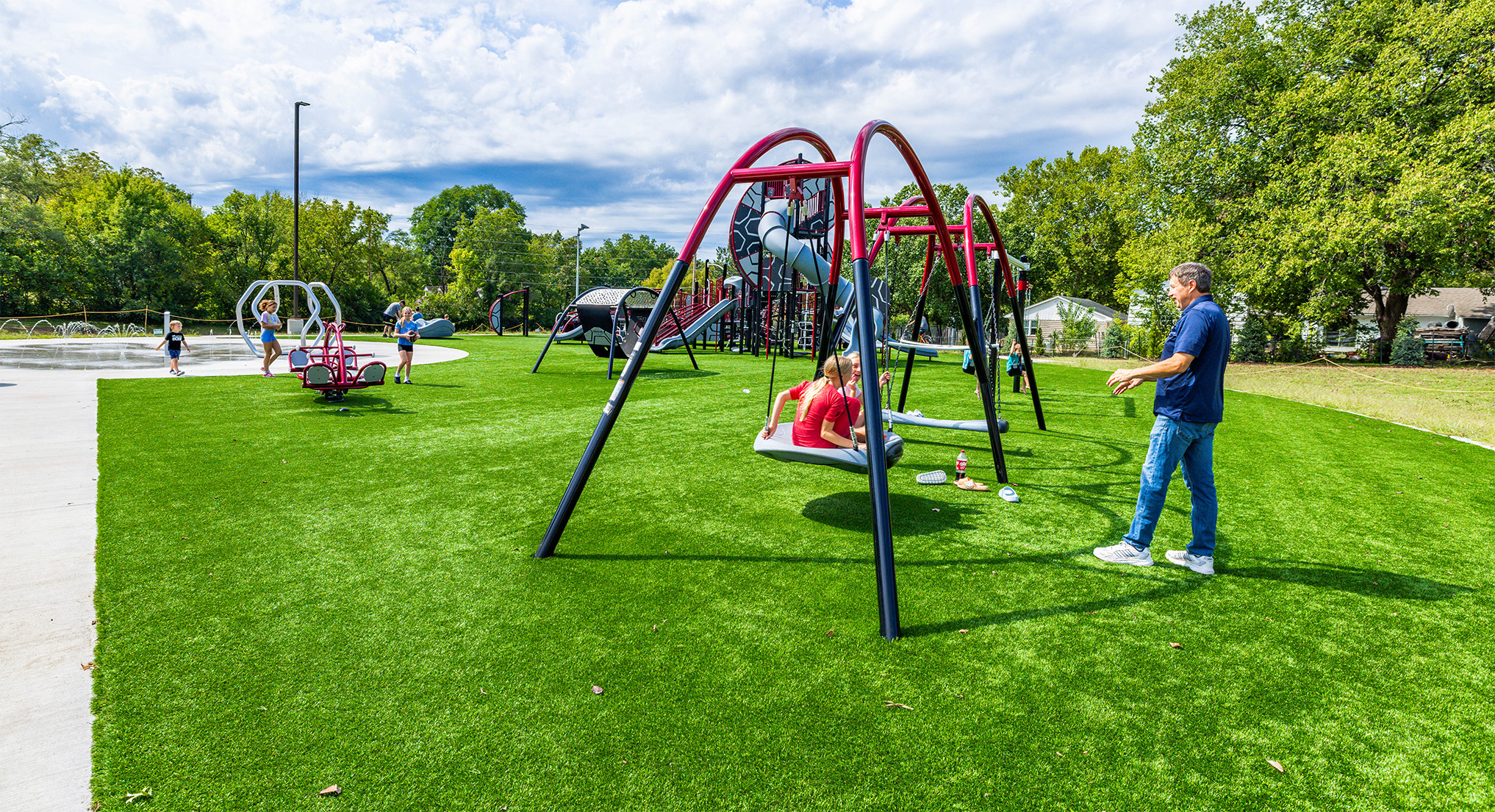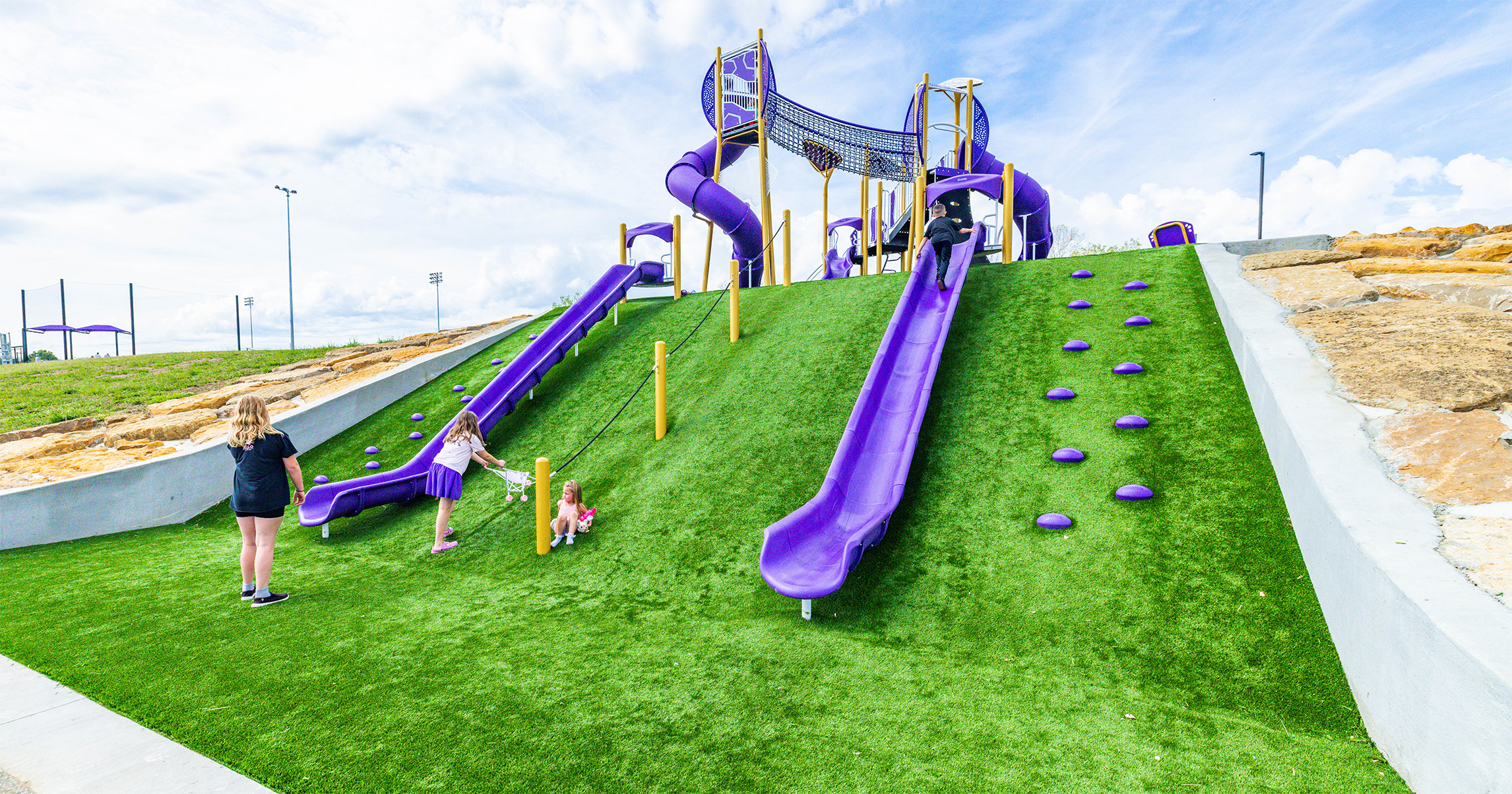
Design-Build Approach Brings Fast-tracked Park Upgrades to Pleasant Hill
October 23, 2025
Most people view engineering as a step-by-step process. And it is, but sometimes those steps can be done simultaneously.
Our civil engineering team recently completed a project in Pleasant Hill, Missouri, that took a design-build approach to updating three parks and rec facilities: a recreation complex, a city lake recreation area, and their city park. The design-build option compressed the timeline for the $11 million project and allowed the city to have all three facilities finished in just nine months, just in time for the summer.
“We went from literally not knowing where anything was going to go to completing the punch list in less than a year,” said Braden Taylor, civil engineer and project manager for MKEC.
Benefits of Design-Build
MKEC worked with Tarkett Sports to coordinate the design-build process where design and construction take place simultaneously.
“The schedule is much more aggressive than the typical design-bid-build,” Taylor said. “One of the benefits is we’re working hand-in-hand with the contractor to find the most cost-effective solutions to get the most out of the available money.”
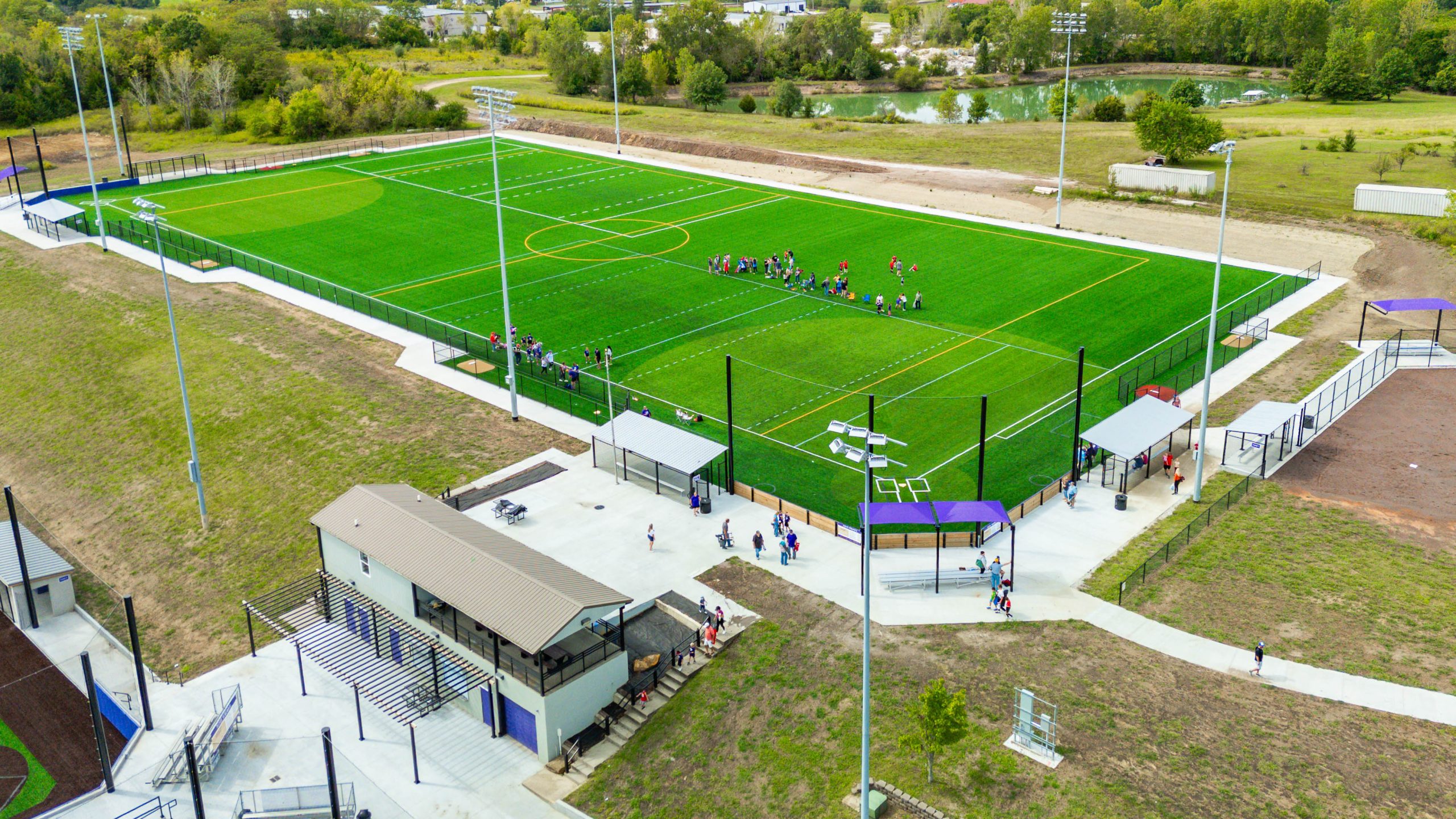
Recreation Complex
The recreation complex was probably the largest and most complex piece of the project. The site originally contained a varsity-level baseball field where the high school plays along with a secondary practice field, some natural turf multi-sport practice fields, a parking lot, and an area that was just an open lot.
MKEC designed an upgrade that added a tee ball field and two artificial turf sports fields lined for multiple sports. In addition, the design included a parking lot expansion with a drop-off loop and post-tension pickleball courts. One of the highlights of the design is a new accessible playground with slides that take advantage of the steep grade of the site.
“The engineering inspiration behind the slides was the significant grade change between the drop-off loop and the varsity baseball field,” Taylor said. “That’s where the idea came from to put in some cool slides to take advantage of the grade and not have to do a lot of earth work.”
MKEC did all of the civil engineering that included grading, paving, utilities, demolition, and the creation of two stormwater retention facilities for the site.
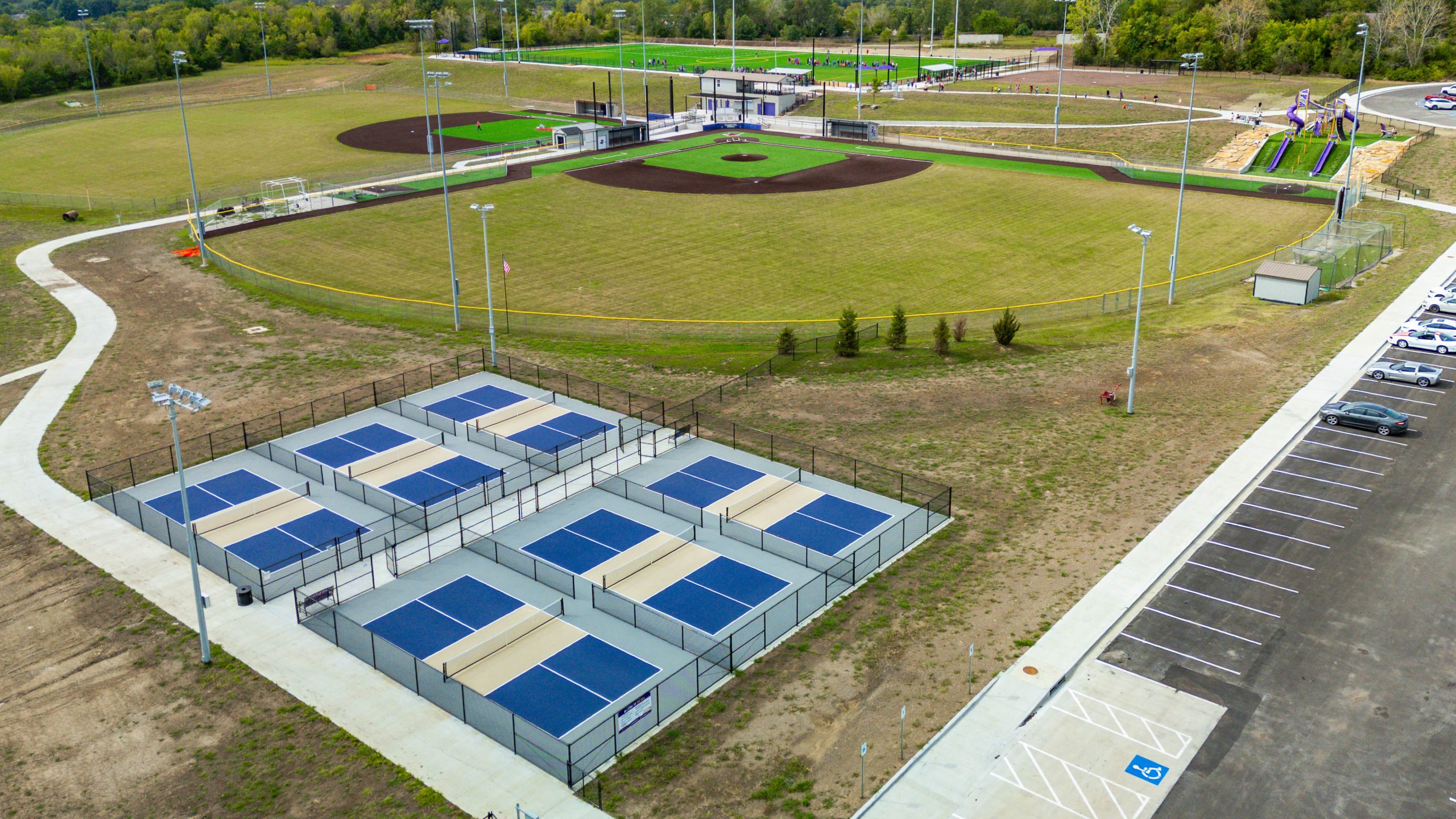
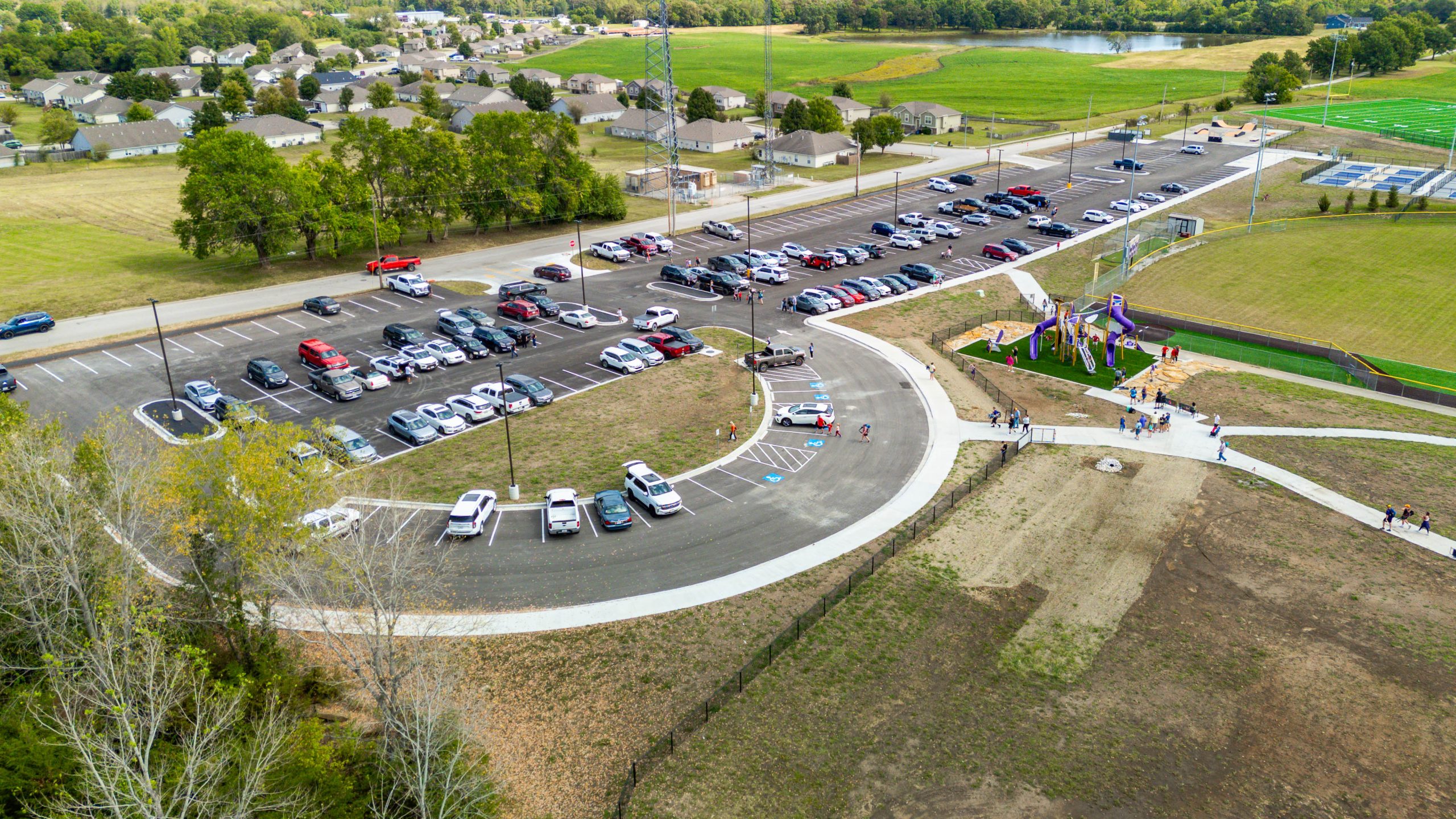
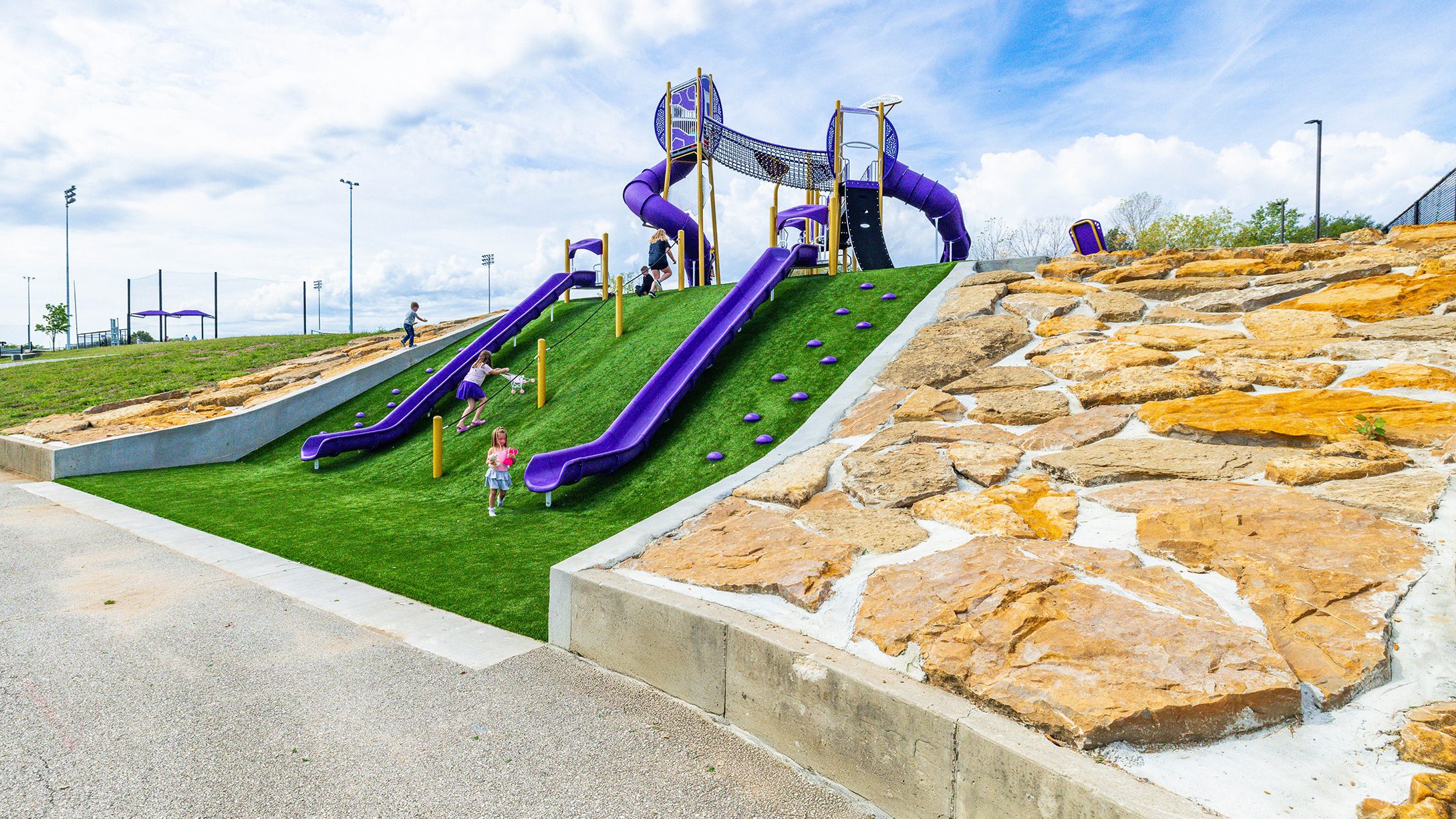
City Park
Over at the city park, the recreation facilities were also in need of an upgrade. Old basketball and tennis facilities needed to be replaced. In addition, the pavilions, parking lot, play equipment and baseball field needed a facelift.
MKEC worked to design a park that included new standard size, post-tension basketball and tennis courts, a new parking lot, an ADA compliant walking path, a pavilion designed to be used as an amphitheater, a new inclusive playground, and a splash pad.
“We worked hard to bring the park up to date, and we were excited to modernize what they had,” said Megan Burrow, civil engineer at MKEC. “This one was unique because it was primarily all civil engineering. We did all the pavement, grading, and drainage work, along with the utility design.”
Drainage was a big concern on this design.
“There was quite a bit of offsite drainage coming to us, which resulted in us adding a large stormwater detention (facility),” Burrow said.
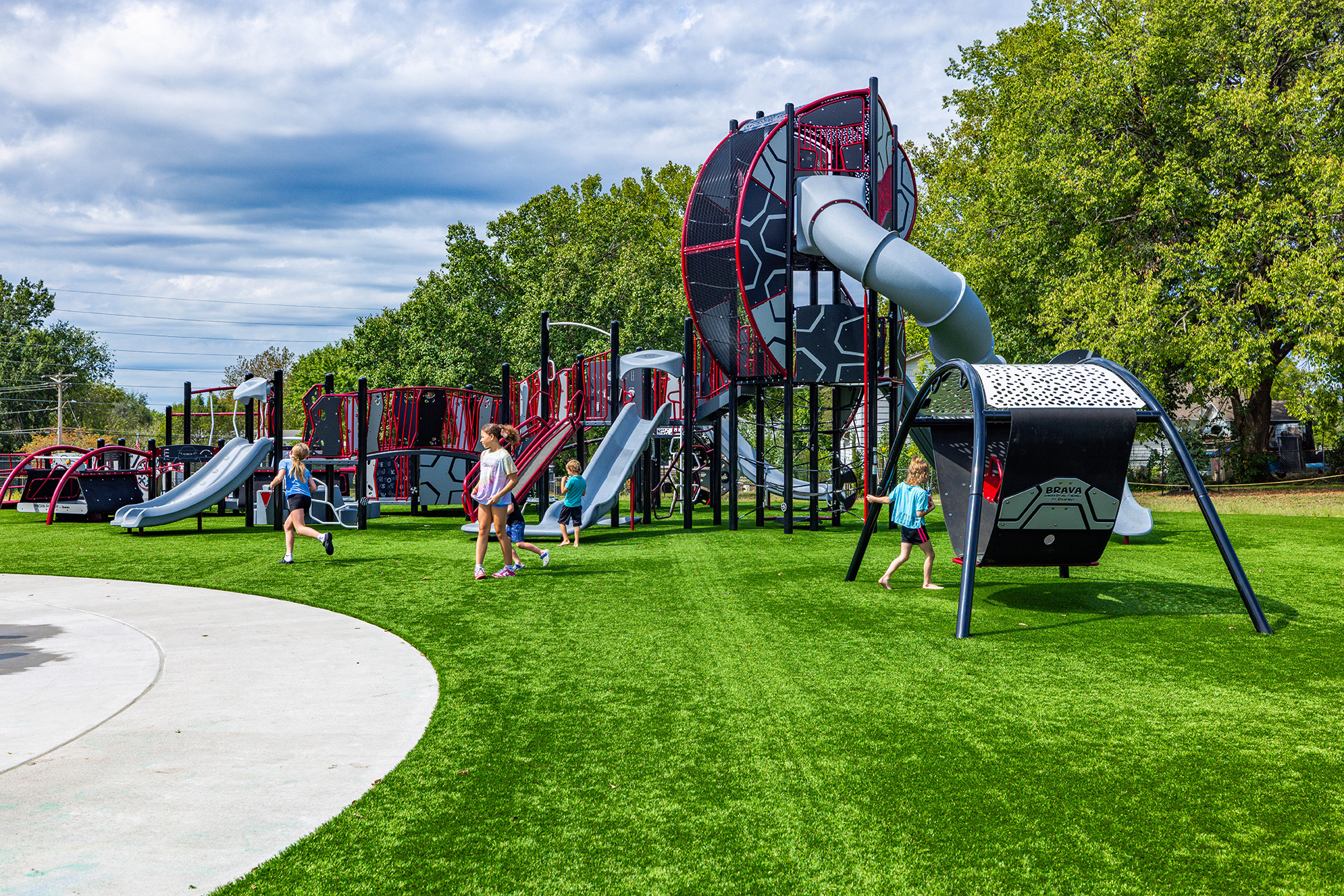
City Lake
The project at the city lake was smaller but still required careful coordination as we worked through the design-build process. The city’s goal was to upgrade the area so that people could use it as an overnight campground.
“The upgrades included paving the drives, providing two-car stalls for camping, adding sidewalks, and a shower/restroom facility,” Taylor said. “The city replaced the playground equipment with new equipment.”
MKEC was also involved with the installation of the new playground. During a volunteer build day, our team even assisted in constructing the City Lake playground.
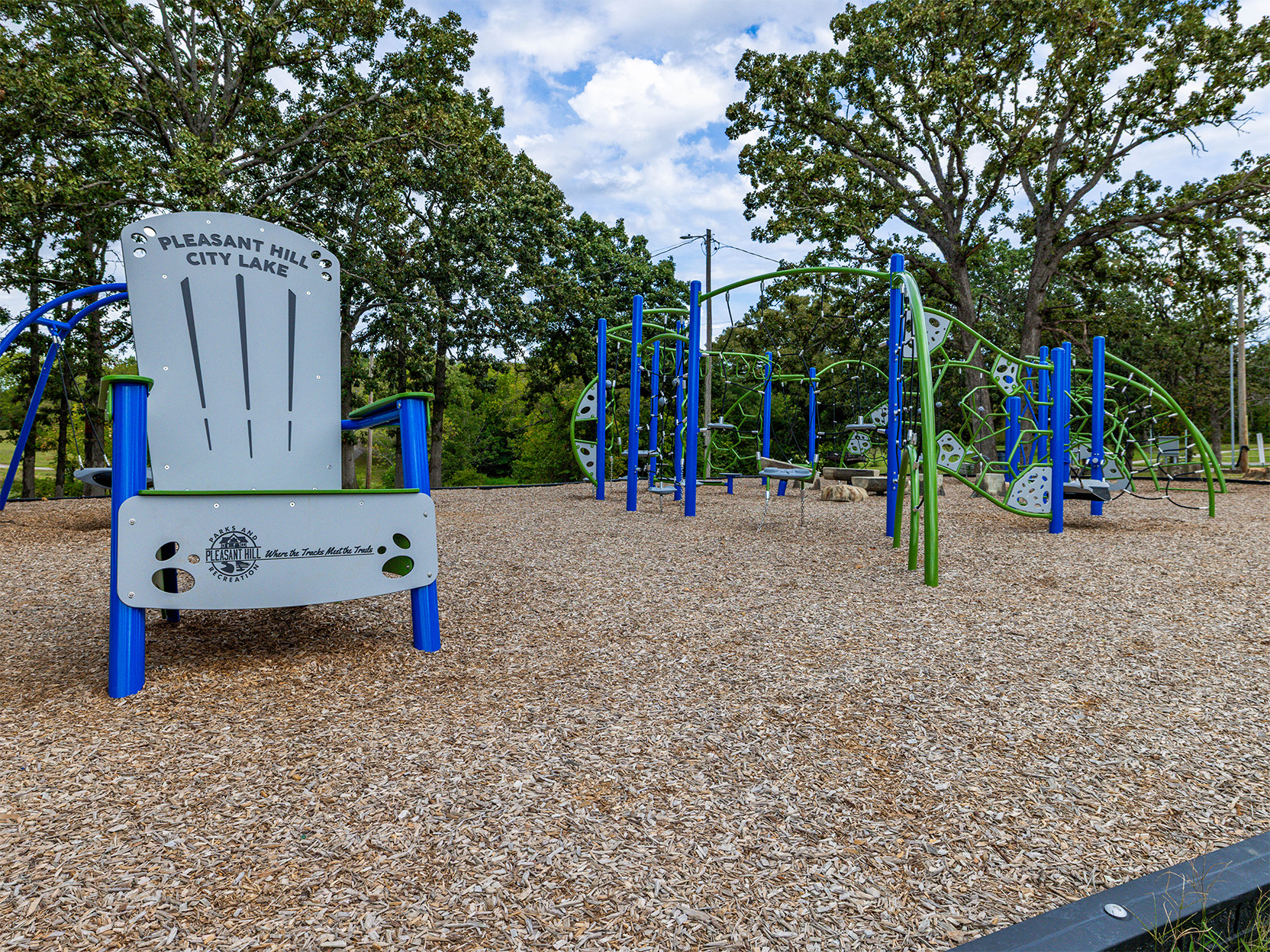
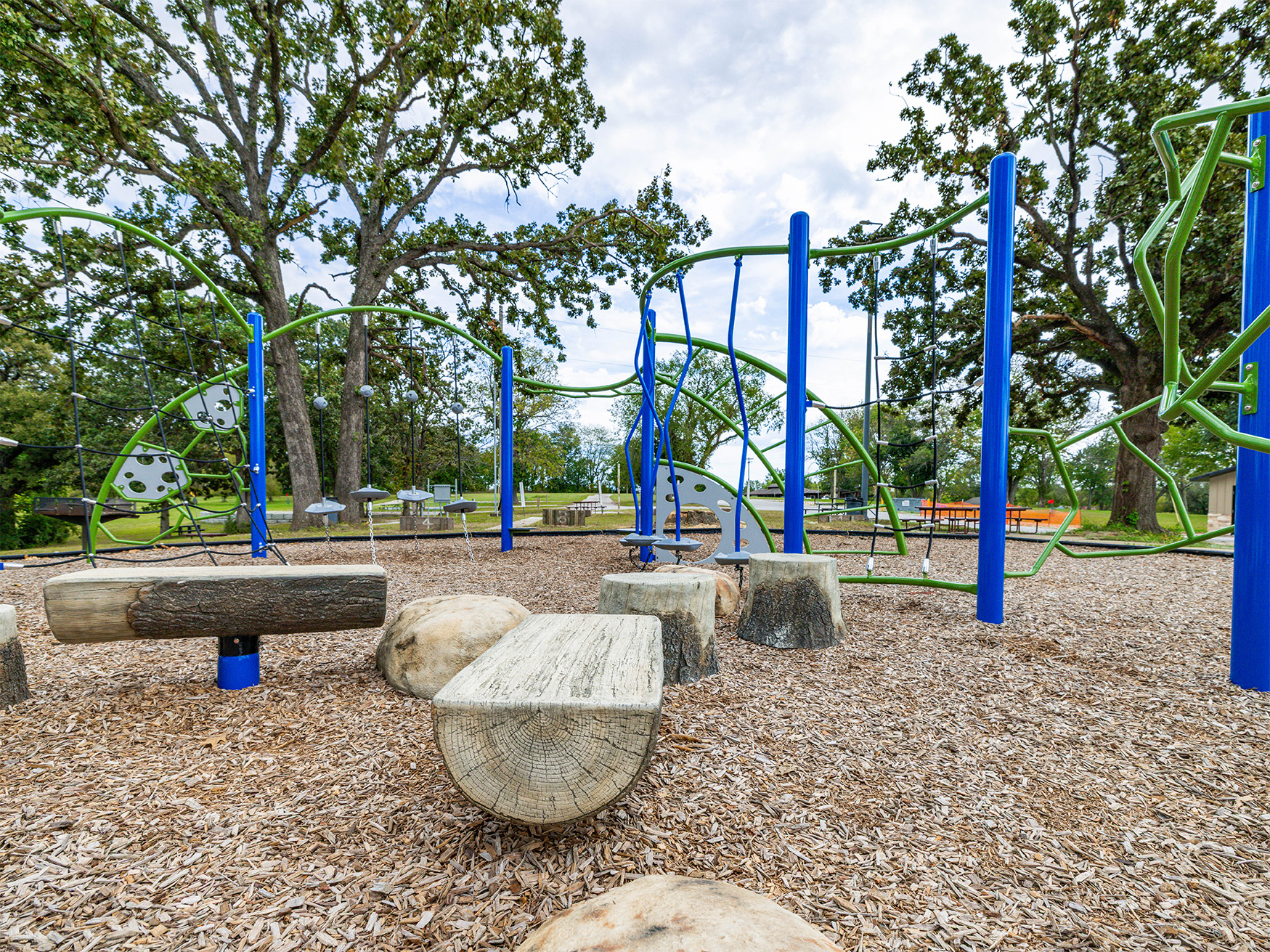
Design-Build Coordination
As a design-build project, working through this alternative process was a challenge our team was ready to tackle.
“It took a lot of coordination,” Burrow said. “We had weekly meetings with the contractor and the city. Usually, you design and then review. This was a more iterative process, getting feedback and incorporating it as the design was created.”
The construction phase brought more involvement from our team. “As it got into construction, we would get phone calls from the contractor about things they would find in the field that meant we needed to adjust the design. The design-build component required that we provide answers and responses much faster than what is typical.”
Despite the accelerated schedule and a new method of review and iterative design, our MKEC team provided our partners with everything they needed, and our team is ready to take on the next design-build challenge.
